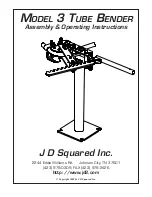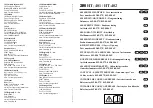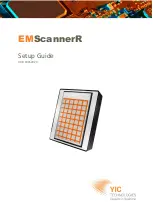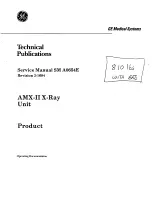
Matters to Be Observed When Using This Product
■
This product (fixed resistor) is not designed for use in specific environments. Using the resistor in the following specific
environments or service conditions may affect the performance/reliability of the resistor. Avoid using it in such specific
environments. If you intend to use the resistor in such environments, checking the performance, reliability, etc., of the
product sufficiently is your own responsibility.
(1) Used in liquid, such as water, oil, chemicals, and organic solvents.
(2) Used in a place exposed to direct sunlight, an outdoor place with no shielding, or a dusty place.
(3) Used in a place where the product is heavily exposed to sea breeze or a corrosive gas, such as Cl
2
, H
2
S, NH
3
, SO
2
,
or NO
X
.
(4) Used in an environment where static electricity and electromagnetic waves are strong.
(5) Located close to a heating component or a flammable material, such as a vinyl cable placed near the product.
(6) Sealed or coated with a resin.
(7) Solder flux of the resistor soldered with no-clean type solder, etc., is cleansed with a solvent, water, or a water-soluble
cleaner, etc. (Water-soluble flux residues have a particularly large influence on a resistor.)
(8) Used in a place where dew concentrates on the product.
(9) Used in a contaminated state.
(Example: Touching the resistor mounted on a printed board leaving sebum on the resistor (improper handling))
■
Sealing the resistor with a resin in a resin potting process, damp-proofing process, etc., applies excessive stress to the
resistor, which may cause the internal electrodes a connection problem. In such cases, the proper operation of the
resistor is not guaranteed. If you intend to use the resistor in such environments, checking the performance, reliability, etc.,
of the product sufficiently is your own responsibility.
■
Do not leave the resistor immersed in a solvent for a long time. When using the resistor immersed in a solvent, confirm
the operation of the product mounted on the board.
■
When a cleaning solution or cleaning condition for cleaning the printed board or a drying condition for drying the printed
board after soldering the resistor is improper, it may have a negative effect on the performance/reliability of the resistor.
Confirming these conditions sufficiently is your own responsibility. Also examine the effects of soiled cleaning agent,
cleaning residues, and post-cleaning contaminations, and control for these effects properly.
■
When the resistor is heating abnormally or emitting a smell, stop using the resistor immediately, for example, turn off
the main power supply of the device.
Also, keep your face and hands away from the product as it may become hot and cause burns.
■
The resistor is so thin that it may break easily when subjected to impact. Before putting the resistor in use, confirm that
the resistor has not been broken by impact that applied thereto when mounted on the printed board. Applying impact to
the resistor or pinching the resistor with a hard tool (pliers, tweezers, etc.) may chip the resistor or its protective film,
which affects its performance. Be careful to avoid such cases.
■
Do not reuse a resistor having been used on a printed board and removed therefrom. Do not touch the resistor with your
bare hands.
■
Be careful not to drop the resistor on the floor, etc. The resistor is likely to suffer mechanical or electrical damage when
dropped on the floor. Avoid using said resistor.
■
The resistor may have its resistance value changed due to electrostatic discharge (ESD). Take ESD prevention measures
when handling the resistor. ESD prevention measures include an environment where static electricity is not likely to be
generated (recommended RH: 40% to 60%), by wearing an earth band, conductive gloves, etc., grounding the device in
which the resistor is incorporated, and placing a conductive mat, etc., on a work platform.
■
It is guaranteed that a resistor not exposed to any stress will have its proper resistance value. Any stress or pressure
applied to the resistor may cause its resistance value to change. Examine and evaluate the characteristics of the resistor
sufficiently before using it.
30-Jun-23
Matters to Be Observed When Using This Product
(Fixed resistor)
Use environments and cleaning conditions
Response to anomalies and handling conditions


























